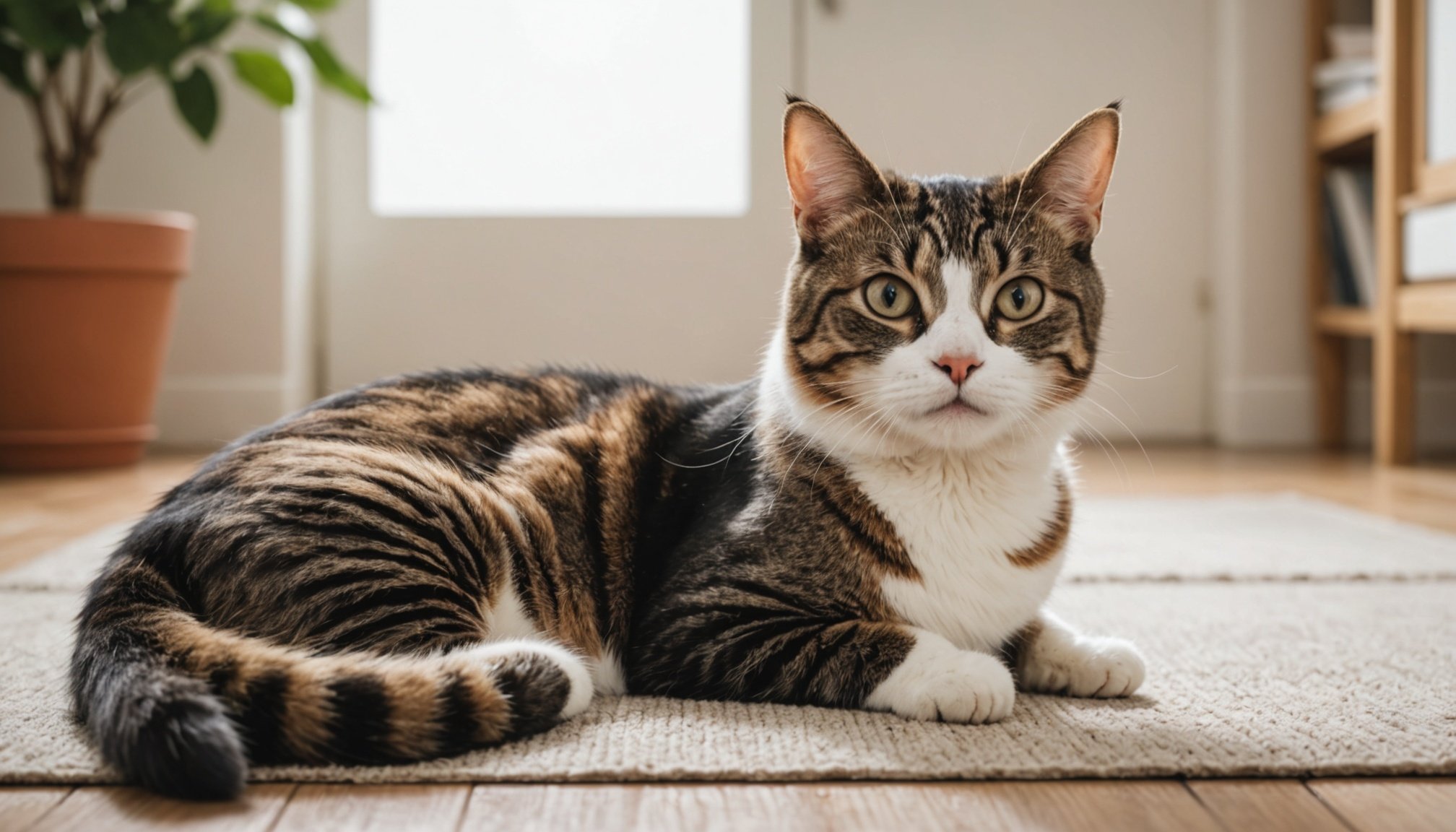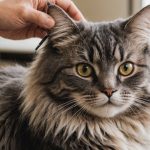Understanding Feline Anxiety
Feline anxiety is a prevalent issue among cats, manifesting through notable changes in cat behaviour. Various triggers can provoke anxiety in cats, such as shifts in their environment, introduction of new pets, or even strangers in the home. Cats are creatures of habit; thus, disruptions to their routine can be particularly unsettling.
Common Causes
Typical anxiety triggers include loud noises, unfamiliar people, and alterations in living arrangements. Changes, whether subtle like rearranged furniture or significant like relocating, can stress a cat and lead to anxious behaviours.
Sujet a lire : Ultimate guide to cat grooming: key strategies for a tangle-free routine with your long-haired cat
Signs to Watch For
Recognising signs of anxiety is essential for cat owners. Watch out for behaviours such as excessive grooming, hiding, aggression, or frequent meowing. These are indicators that your cat may be under stress, requiring your attention and intervention.
Importance of Addressing Anxiety
Addressing feline anxiety is crucial for maintaining your pet’s overall health. Prolonged anxiety can undermine a cat’s immune system, making them more susceptible to illnesses. Understanding and managing anxiety effectively can improve the quality of life for your feline friend and foster a more harmonious household. Recognising and mitigating these triggers allows for a healthier, happier cat.
Cela peut vous intéresser : Ultimate guide to providing exceptional care for cats with feline lower urinary tract disease (flutd)
Designing a Calming Environment
Creating a calming environment for your cat is crucial for their wellbeing. To transform your home into a serene sanctuary, start by considering key elements that contribute to a stress-free zone. Opt for soft textures and colours that are known to have a soothing effect, such as light blues and greens. These hues are not only calming but also complement a variety of decors.
When selecting materials, think comfort and tranquillity. Plush fabrics and natural materials, like cotton and wool, offer a comforting touch. They help establish a serene sanctuary your cat will enjoy. In addition, providing your feline friend with quiet areas is vital. These spaces allow them to retreat and relax, away from bustling home activities.
Natural light plays a significant role in promoting calmness. Position your cat’s favourite resting places near windows where gentle sunlight streams through. The warmth and glow of natural light can enhance a calming environment, providing contentment and relaxation.
Lastly, ensure these areas remain stress-free by minimising loud noises and disruptions. With a thoughtful approach, you can design a calming retreat for your cat where they feel safe and serene.
Essential Furnishings for Comfort
Creating a space that’s both inviting and secure for your feline friend involves thoughtful selection of cat furniture, enrichment items, and cozy beds. Each plays a role in promoting well-being and reducing stress.
Selecting Comfortable Cat Beds
To ensure your cat enjoys restful naps, focus on beds offering soft materials and ample support. Consider beds with raised edges to enhance their sense of security. Place the bed in a quiet, low-traffic area for optimal comfort. This gives your cat a peaceful retreat from household noise.
Choosing Safe and Engaging Cat Trees
Cat trees are vital for both exercise and mental stimulation. Look for trees with multiple levels, sturdy construction, and sisal-wrapped posts for scratching. Ensure they support climbing and perching activities, helping to alleviate stress and keep your cat engaged.
Incorporating Hiding Spots and Private Areas
Cats appreciate hideaways where they can retreat. Hiding spots can be small tunnels or enclosed boxes. Providing these spaces enables cats to relax and observe their surroundings discreetly. Ensure these areas are accessible and offer escape routes to further their sense of security and reduce anxiety.
Utilizing Calming Products
When it comes to calming products for pets, multiple options can help ease their anxieties. Products like pheromone diffusers, such as Feliway, are engineered to mimic natural pheromones. These diffusers can create a comforting environment for your pet, effectively promoting anxiety relief. Calming sprays are also popular, offering a quick method to apply soothing scents in your pet’s environment.
Besides these products, incorporating soothing music or sound machines can significantly contribute to a peaceful setting. Many pets find comfort in rhythmic and gentle sounds, which can distract them from anxiety triggers and create a sense of safety.
Exploring natural remedies and supplements is another avenue for addressing feline anxiety. Supplements often include herbal ingredients like valerian root or chamomile, known for their relaxation properties. It’s essential to consult with a veterinarian to find the right balance and ensure these options are safe for your specific pet.
To summarise, using a combination of pheromone diffusers, calming sounds, and natural remedies can be an effective strategy for managing pet anxiety. Each approach offers its own benefits, and they can often be used in tandem for enhanced anxiety relief.
Safe Spaces and Accessibility
Ensuring that our feline companions have safe spaces they can retreat to is vital for their well-being. These access points should be easily accessible, allowing quick entry without discomfort. Consider locations that are elevated or partially enclosed to evoke a sense of security. Ensuring these spots are clutter-free will provide both comfort and ease of access.
Cat Safety Strategies
To maintain these areas as safe havens, it’s important to incorporate specific cat safety strategies. Start by removing any objects or items that could present a hazard. Secure cords, remove small items that could be swallowed, and ensure that all furniture is stable and less likely to topple. Regularly check these areas for potential hazards.
Minimising Environmental Stressors
Reducing stressors in a cat’s environment is paramount. This includes limiting loud noises and ensuring that the temperature and lighting are comfortable. By proactively managing these access points, we significantly enhance environmental safety.
By investing time in creating and maintaining safe, accessible spaces that are free of hazards, we are not only attending to the physical safety of our cats but also ensuring an environment that promotes tranquillity and reduces stress.
Interactive and Enriching Activities
To ensure a cat’s wellbeing, interactive and enriching activities are crucial. Engaging with your feline friend not only provides mental stimulation but also significantly reduces stress levels by incorporating playtime into their daily routine.
Engaging Toys for Mental Stimulation
Cats find satisfaction and excitement in toys that mimic prey or encourage problem-solving. Toys like puzzle feeders and interactive laser pointers can transform regular playtime into a mentally stimulating session. These toys not only alleviate boredom but also act as effective stress relief mechanisms.
Promoting Interactive Playtime
Interactive playtime involves more than just toys; it’s about fostering active engagement. By encouraging your cat to chase a wand toy or pounce on a feather teaser, you create an opportunity for bonding and exercise. Such activities are excellent for anxious cats, as they divert attention from stressors.
Creating a Routine for Stability
A consistent routine brings a sense of predictability and security to cats’ lives. Scheduled playtime is beneficial as it helps establish a daily rhythm, reducing anxiety. Maintaining a stable environment involves setting regular intervals for feeding, playing, and resting. By adhering to predictable patterns, stress-induced behaviours in cats can be minimized.
Monitoring and Adjusting the Environment
Understanding the needs of your cat is crucial for their well-being. Continual observation plays a significant role in maintaining harmony within your home. Watch how your cat reacts to different settings, and adjust the environment accordingly. If a particular area seems to cause distress, try rearranging furniture or limiting access to help alleviate anxiety.
Environmental adjustments can be subtle yet effective. For instance, ensuring adequate hiding spots or vertical spaces can make a difference. Note how your cat uses these spaces and whether their behavioral changes indicate comfort or distress.
It’s equally important to recognize the moments when professional help is necessary. If persistent anxiety issues become evident despite your best efforts, consult a veterinarian or a pet behaviorist. They can offer insights and remedies tailored to your cat’s needs.
When monitoring your cat, pay attention to signs such as unusual aggression or withdrawal. Address these cues promptly by adapting the environment and potentially seeking expert advice. In doing so, you ensure your feline friend can thrive in a space that supports their emotional and physical health.











